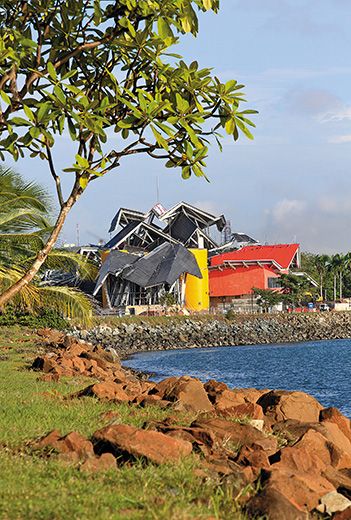Frank Gehry’s BioMuseo, New Science Museum in Panama
Over 43,000 square feet of exhibit space will tell the story of the isthmus and the diverse species who live there
/https://tf-cmsv2-smithsonianmag-media.s3.amazonaws.com/filer/Fast-Forward-BioMuseo-631.jpg)
Puente de vida The little squiggle of land connecting North and South America is a recent addition, geologically speaking. Around 15 million years ago, underwater volcanoes began forming islands. Then the movement of tectonic plates pushed up parts of the seafloor. By around three million years ago, the land bridge that we know today as the Isthmus of Panama had formed—allowing for a massive north-south migration of plants and animals, and an explosion of new species.
So Panama is the ideal site for the BioMuseo (Museum of Biodiversity), due to open next summer. The $60 million building (left) was designed by world-renowned architect Frank Gehry, whose works include the Guggenheim Museum in Bilbao, Spain. The architect departs from his usual metallic color scheme and adds bold red, golden yellow and cobalt blue panels that reflect the tropical environment.
The building will house eight display galleries over 43,000 square feet. The exhibits, designed in consultation with scientists at the nearby Smithsonian Tropical Research Institute, portray the history of the isthmus and the species it engendered. For instance, the “Oceans Divided” hall will feature a pair of semi-cylindrical, two-story aquariums displaying the different life that emerged in the Pacific and Caribbean. The two bodies of water are separated at their narrowest point by just 30 miles of land. But—as the BioMuseo vividly demonstrates—they are worlds apart.
Planning Your Next Trip?
Explore great travel deals
Smithsonian magazine participates in affiliate link advertising programs. If you purchase an item through these links, we receive a commission.
/https://tf-cmsv2-smithsonianmag-media.s3.amazonaws.com/accounts/headshot/mark-strauss-240.jpg)

/https://tf-cmsv2-smithsonianmag-media.s3.amazonaws.com/accounts/headshot/mark-strauss-240.jpg)